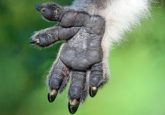A record-breaking genome and the conquering of land

Sequencing of the massive lungfish genome has provided insights into the tree of life and how our ancestors adapted to life on land. Our ancestors first crawled out of water and began to colonize land around 280 million years ago. Few of those ancestors are left; however, for one ‘living fossil’ – the endangered Australian lungfish – researchers have now sequenced its giant genome, setting a record and answering questions about our move onto land. Neoceratodus forsteri is a lobe-finned fish that dwells in slow-flowing rivers and still water in Australia. Its genome is a surprising 14-times bigger than our own, at 43 billion base pairs,...
To view this content, please register now for access
Join our member community for FREE to access a collection of journal and online-only features, including:
- Exclusive access to educational videos, eBooks and insights into top BioTechniques journal articles
- The latest news and journal updates delivered straight to your inbox when you want it
- Personalized recommendations for the latest member-exclusive podcasts, interviews and expert opinions
- Priority registration to webinars, panel discussions and events
- Access to competitions and journal publication discounts, including 10% off open access fees when you sign up today!





